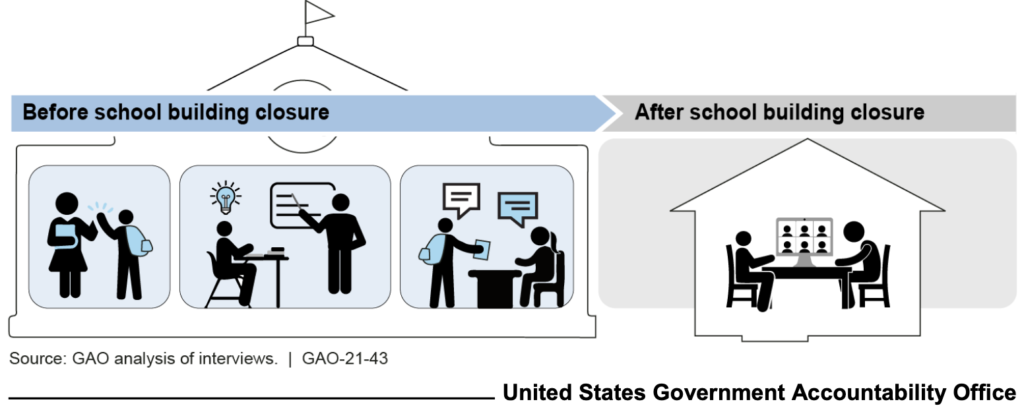
A November report from the Government Accountability Office investigated how schools managed special education and services for students with disabilities and English learners when distance learning displaced many of their in-school services in the spring. The GAO found that by and large they struggled.
The investigation was conducted as part of GAO’s oversight responsibilities under the CARES Act, a federal COVID-19 relief package passed earlier this year.
The report was conducted under oversight authority to the GAO granted by the CARES Act, the first massive COVID relief package passed in late March.
Investigators reviewed distance learning plans from 15 school districts known to serve high proportions of either students with disabilities or English learners. The investigation included interviews with district officials, advocates, researchers and representatives from national organizations of school administrators and other school service providers.
Investigators found that “a variety of factors complicated the delivery of special education services during distance learning.” In particular, the broad range of needs among students with disabilities as well as the variety of services called for in their individualized education programs posed a significant challenge. What’s more, the ability of parents and caregivers to help students with disabilities played a role.
None of the investigated school districts’ distance learning plans included details on how the specialized instruction or related services specified in students’ IEPs would be provided. Rather, many of the district plans simply noted that parents of students with disabilities would be contacted individually by a special education teacher.
Additionally, district officials and representatives from advocacy groups noted that the shorter school days in remote schedules made it particularly difficult to provide the specialized instruction and related services detailed in students’ IEPs on top of regular general education.
Some school districts modified students’ goals and services to account for the limitations of distance learning. In some cases these adjustments were formalized as temporary distance learning addendums to students’ IEPs. Eight of the 15 districts in the review explicitly noted in their plans that the goals and activities of existing IEPs would be modified with manageable goals, given the logistics of the new learning environment.
With students and their parents overwhelmed by the increased demands, districts, researchers and advocates reported that increased collaboration among educators proved critical to the efficient delivery of quality education that met students’ needs.
Some changes, like the use of virtual meetings, could continue even when children return to in-person classes, GAO said.
In the interim, advocates told government investigators that “providing students with the services they need remains an ongoing challenge.”


